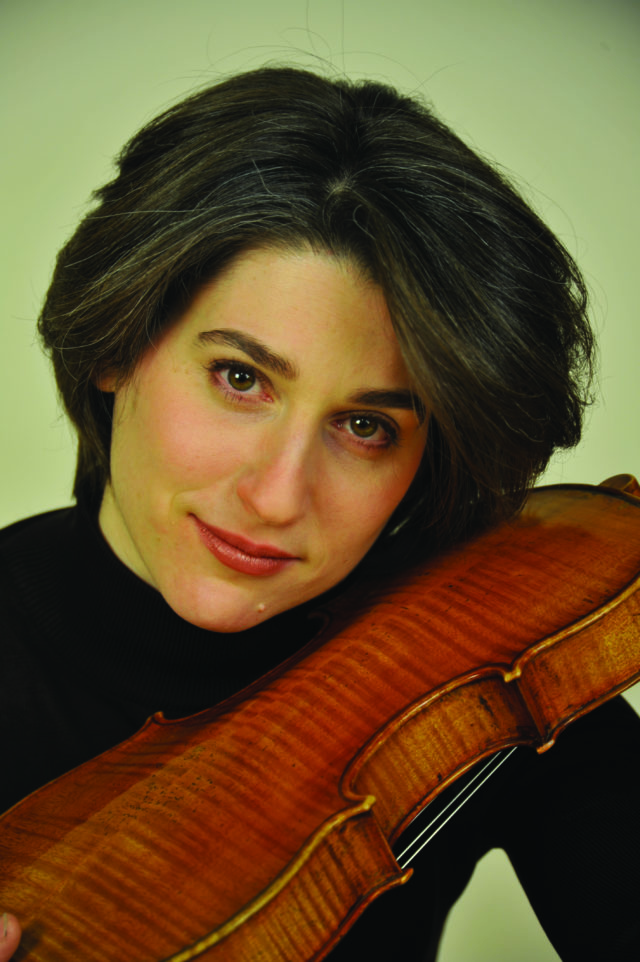
“Musical Journeys” is the thread running through the 2018–19 season of the Longmont Symphony Orchestra (LSO), and it takes different forms in each of three works on their next concert, to be performed Saturday, April 6.
Most obvious is Bedřich Smetana’s tone poem The Moldau, which describes the river Moldau flowing from the mountains, through the villages of Bohemia and on to the sea.
Also on the program is Tchaikovsky’s Violin Concerto in a performance that recalls career journeys of the soloist, Sharon Roffman, and the LSO’s conductor, Elliot Moore, who have known each other since they were 15. The Tchaikovsky is one of the first concertos Roffman learned, and she has recently returned to it after 10-plus years. Her journey over that time, playing chamber music, solo engagements and in orchestras, has deepened her understanding of the concerto.
The final piece on the program is Bartók’s Concerto for Orchestra, which the Hungarian composer wrote at the end of a journey that brought him to the United States during World War II. Moore programmed the Concerto for Orchestra in order to highlight the LSO’s journey during his two years as music director.
“There were two reasons that I programmed this,” he says. “One is to show what an amazing orchestra we have here in the community, and the other is to continue the thread we have through the season, which is this musical journey.”
Roffman’s musical journey has taken her to the concertmaster’s chair of the Royal Scottish National Orchestra. In that position she has recently made news in the classical music world when a guest conductor canceled his engagement. At the suggestion of orchestra members, Roffman will replace him, leading the orchestra from the violin section in performances of Beethoven’s Fifth Symphony.
She has played Tchaikovsky’s Violin Concerto many more times as a member of the orchestra than as a soloist, an experience that has given her a broad familiarity with the work and changed her goals as a soloist. “I think I’ve probably heard the piece thousands of times — I wouldn’t even be able to count,” she says.
“I’m playing it differently now, because I know what the rest of the orchestra has, and I’ve learned what a good soloist does, or doesn’t do. There are some soloists that you get the sense they don’t realize that there are 100 people behind them, and then there are some who come and play chamber music with the orchestra, and make sure they are just one part of a greater whole. That’s what I aspire to as a soloist.”
In line with the LSO’s season thread, Roffman speaks of the concerto itself as a musical journey. “When you’re listening to a piece like this you have to pace yourself to go on a long journey,” she says. “I always enjoy putting stories with [the music I play], so I encourage audiences to do that, too. For me, listening to music is a time that I can be alone in my head.
“Listening to classical music is the chance to process emotions and have a little respite from the world.”
Moore sees the Bartók Concerto for Orchestra as an essential piece for orchestras. “To me, it is absolutely a 20th-century classic that showcases each section of a very large orchestra,” he says. “I wanted to highlight the wonderful musicians of the Longmont Symphony and the asset that we have in this orchestra.”
The most familiar concertos, like Tchaikovsky, feature a single soloist in contrast with the orchestra. “Most audiences think of the concerto as a virtuosic piece for an instrumentalist,” Moore explains. The Concerto for Orchestra “ties into a concerto by highlighting various sections of the orchestra — that element of featuring soloists.”
Moore views The Moldau as much more than a musical description of a river. “To me it’s almost a religious work,” he says. “While obviously it is about this river that flows from the mountains into Prague, for me what it’s really describing is the cycle of life.
“It begins in its tiniest form, and as it flows and goes on its journey, it experiences joy, it experiences love, it experiences passion, and it also experiences difficulties.”
The music describes the river flowing past a village, where a wedding is in progress — representing love, in Moore’s view — and there are rapids — representing the struggles of life. At the end, it flows out into the sea, beyond where we can see.
“To me, that’s more the journey,” Moore says. “About this incredible life that impacts more life. It impacts others in ways that we don’t know, because we’re now gone.
“It’s a beautiful, beautiful work that fits very well our thread of musical journeys.”














